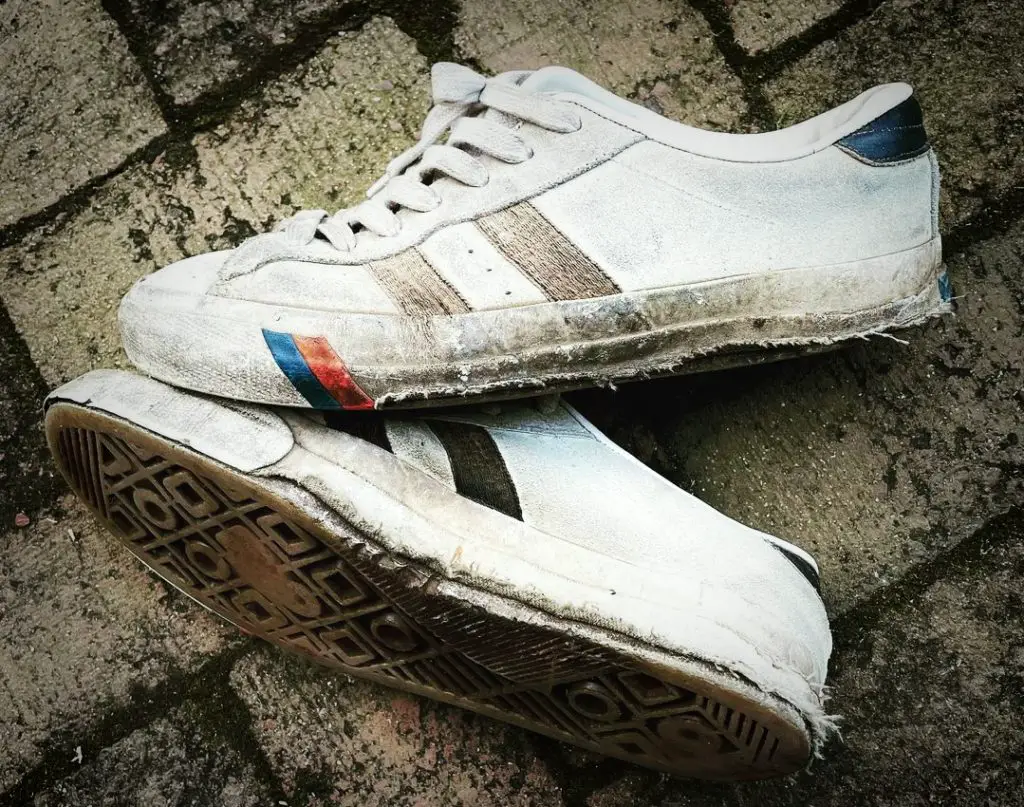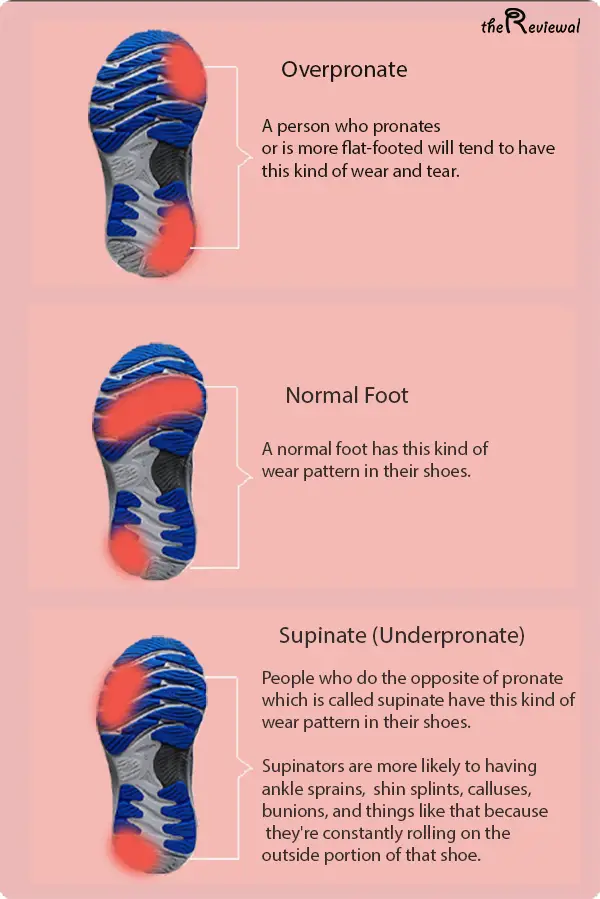Running Shoes Don’t Last Forever.
It’s a well-known fact that no pair of shoes lasts forever, including running shoes.
While they may be durable and carry us for many miles, the wear and tear they endure from asphalt, mud, sunlight, sweat, and other factors gradually diminish their lifespan.
As a general rule, running shoes should be changed based on the number of miles run rather than a specific time period.
However, it’s not uncommon for people to find that their shoes wear out faster than what the manufacturer claims.
This raises the question: why does this happen?

We’ll delve into that later in this article, but first, let’s outline what you can expect to gain from reading this piece.
This article aims to provide you with essential information about the lifespan of running shoes.
You’ll discover the average duration of a pair of running shoes, the parts that wear out first, why shoes deteriorate quickly, how to prolong their lifespan, and a few additional tips.
Keep reading to get started.
The lifespan of a running shoe can vary depending on several factors, such as frequency and intensity of use, shoe quality, and running surface.
On average, a high-quality running shoe can last between 300 to 500 miles or approximately 4 to 6 months for individuals running 20 to 30 miles per week.
However, runners with a heavier stride or those who run on abrasive surfaces may need to replace their shoes more frequently.
It’s important to note that running shoes have a limited lifespan even if they aren’t used regularly, as materials can degrade over time.
Experts recommend replacing running shoes every 6 to 8 months, regardless of whether they show visible signs of wear from regular use.
Paying attention to signs that your shoes may need replacing is crucial.
Look out for noticeable wear and tear, loss of cushioning or support, or discomfort and pain while running.
Wearing shoes past their lifespan increases the risk of injuries and negatively impacts performance.
Therefore, investing in good quality running shoes and regularly replacing them is essential for a safe and enjoyable running experience.
What is the lifespan of running shoes? what does it mean?
Essentially, it refers to how many miles your shoes can carry you.
While some people measure lifespan in terms of time (months or years), experts recommend measuring shoe lifespan in miles.
Several factors influence the longevity of your shoes, such as the materials used, your running style, how you clean them, and more.
We’ll explore these factors later in the article.
Now, let’s address the burning question: on average, how many miles do running shoes last?
The answer varies depending on individual circumstances.
However, as a general guideline, running shoes typically last around 300 to 500 miles.
Some may last a little longer, while others wear out more quickly.
Which part of the shoe wears out first?
Usually, the outer side of the shoe sole deteriorates faster than other parts.
This is due to walking style and the common condition known as overpronation.
Contrary to popular belief, the inner side of the sole doesn’t wear out first.
Most people, regardless of their pronation pattern, strike the ground with the outside of the heel first.
This natural walking motion increases the probability of wearing out the outer part of the shoe sole.
Proper care of your shoes is vital to extend their lifespan.
Ensure you wash and dry them correctly to prevent unnecessary deterioration.
Which sole will wear out early and which is long-lasting?
When it comes to sole durability, various materials are used, including rubber, leather, PVC, polyurethane, EVA, and more.
Each sole material possesses unique characteristics in terms of durability, traction, and shock absorption.
Based on user experiences, rubber soles tend to be more durable and long-lasting compared to other types.
Conversely, wedge soles (such as Christy soles) used in many modern boots are softer and prone to faster damage.
What your shoes can tell you
Your shoes can reveal valuable information about your foot mechanics.
Individuals with overpronation or flat feet tend to experience wear on the inside portion of the shoe, while those who supinate observe wear on the outer edge.
Supinators, constantly rolling on the outside of the shoe, may be more susceptible to ankle sprains, shin splints, calluses, bunions, and related issues.
Also Read – Best Shoes to Wear After Bunion Surgery

How to know when your running shoes are worn out?
So, how can you determine if your running shoes are worn out?
Here are some telltale signs:
- Nagging aches and pains in your feet, which could be indicative of other injuries. If the pain persists beyond one run, it’s likely time for a new pair of shoes.
- Flattened feeling during each step. The bouncy midsole of new or relatively unused shoes absorbs impact, protecting your feet and joints. As shoes age, the foam loses its ability to rebound, resulting in a less comfortable running experience.
- Uneven wear patterns on the shoe’s bottom. This may signal the need for a new pair, especially if the wear pattern has removed lugs and is digging into the midsole. It’s advisable to bring shoes displaying odd wear patterns to the store when purchasing new ones for proper assessment.
- Excessive wear and bald patches on the outsole. The outsoles of running shoes, similar to car tires, provide cushioning and grip. Running primarily on concrete and asphalt exposes the soles to abrasion. Excessive wear diminishes their effectiveness, making it necessary to replace them.
Do heavier runners wear out shoes faster? Explained
The answer is yes.
Individuals with a body mass index (BMI) of 25 or higher or weighing over 90 kg are considered heavy runners.
Due to the increased pressure on shoes caused by higher weight, they tend to wear out faster.
As a general guideline, heavy runners may need to change their shoes every 300 miles or so, compared to the average 300 to 500-mile range.
Final Thoughts
In conclusion, I hope you found this article informative and valuable.
It’s important to understand the lifespan of your running shoes to optimize your running experience and minimize the risk of injuries.
Now equipped with this knowledge, you can make more informed decisions when it comes to selecting and replacing your running shoes.
FAQ
How long do running shoes typically last?
The lifespan of running shoes can vary depending on various factors such as usage, running style, shoe quality, and personal preference.
On average, running shoes last between 300 to 500 miles (or approximately 480 to 800 kilometers).
What factors affect the lifespan of a running shoe?
Several factors can impact the lifespan of a running shoe, including the frequency and duration of use, running terrain, individual body weight, running style, shoe construction, and overall shoe quality.
How can I tell when my running shoes need to be replaced?
It’s important to monitor the condition of your running shoes regularly. Signs that indicate the need for replacement include excessive wear on the outsole, loss of cushioning and support, visible creasing or cracking, discomfort or pain during runs, and an increase in the frequency of injuries.
Can I extend the lifespan of my running shoes?
While the lifespan of running shoes is ultimately determined by their usage and wear, there are a few steps you can take to prolong their life. These include rotating between multiple pairs of shoes, allowing them to dry thoroughly after each use, and avoiding excessive exposure to extreme heat or cold.
Are there any general guidelines for replacing running shoes?
As a general guideline, it is recommended to replace your running shoes every 300 to 500 miles (480 to 800 kilometers) or every 6 to 12 months, even if they still appear to be in good condition. However, it’s important to assess the condition and performance of your shoes individually.
What happens if I continue to run in worn-out shoes?
Running in worn-out shoes can lead to various issues such as decreased cushioning and shock absorption, increased impact on joints, muscles, and tendons, and an increased risk of injuries such as shin splints, plantar fasciitis, and stress fractures.
Are there any signs that my running shoes are still in good condition?
Signs that indicate your running shoes are still in good condition include an even and unworn outsole, intact midsole cushioning, secure upper construction, and a comfortable fit without any discomfort or pain during runs.
How can I choose the right running shoes to maximize their lifespan?
To maximize the lifespan of your running shoes, it’s important to choose shoes that are appropriate for your running style, foot type, and specific needs. Visiting a specialty running store for a professional fitting and gait analysis can help you find the right shoes.
Can I use my old running shoes for other activities?
While running shoes are designed specifically for running, some individuals may repurpose their older shoes for activities with less impact, such as walking, everyday wear, or gardening. However, keep in mind that the cushioning and support may have significantly diminished.
Are there any specific care instructions to follow to maintain the lifespan of my running shoes?
To maintain the lifespan of your running shoes, it’s advisable to follow the manufacturer’s care instructions. Generally, this includes spot cleaning with mild detergent, hand washing if necessary, air-drying at room temperature, and avoiding machine washing or excessive exposure to water.
